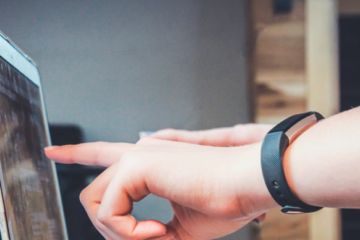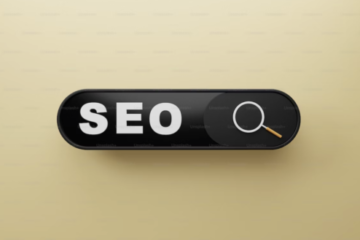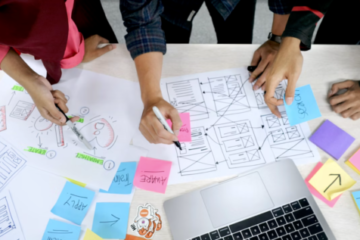

The Paradox of Specificity: Striking a Balance in Design
Introduction:
In the world of design, the quest for specificity can sometimes lead to a paradoxical situation. On one hand, specificity is essential to creating meaningful and tailored experiences for users. On the other hand, an excessive focus on specificity can limit creativity, hinder innovation, and overlook the broader context. This paradox of specificity challenges designers to strike a balance between meeting individual user needs and considering the bigger picture. In this blog post, we will explore the paradox of specificity in design and discuss how designers can navigate this delicate balance.
Understanding the Allure of Specificity: Specificity in design refers to tailoring experiences to meet the unique needs and preferences of individual users. The allure of specificity lies in the potential to create deeply personalized and engaging experiences that resonate with users on a personal level. By paying attention to minute details and providing customized solutions, designers can foster a sense of connection and empathy with users, enhancing their overall satisfaction.
The Pitfalls of Hyper-Specificity: While specificity can be a powerful tool, hyper-specificity can lead to several pitfalls. Tunnel vision focused solely on individual needs may neglect the broader user base and overlook the context in which the design operates. This can result in exclusionary design choices, limited scalability, and an inability to adapt to changing circumstances. Furthermore, an obsession with specifics may hinder creativity and innovation, restricting designers from exploring new ideas and possibilities.
Striking the Right Balance: Achieving the right balance between specificity and flexibility is crucial for successful design. Here are some strategies to help designers navigate the paradox of specificity:
User Research and Empathy: Conduct thorough user research to understand user needs, behaviors, and pain points. Empathize with users to identify common patterns while remaining open to diverse perspectives.
Define Core Principles: Establish a set of core design principles that guide your work. These principles should be specific enough to inform your design decisions yet flexible enough to accommodate various scenarios.
User Personas: Create user personas to represent the different segments of your target audience. These personas will help you understand and address specific user needs while still considering the broader context.
Iterative Design Process: Embrace an iterative design process that allows for continuous improvement based on user feedback. This approach enables you to adapt and refine your designs to suit changing requirements.
Scalability and Future-Proofing: Consider the scalability and adaptability of your design. While addressing specific user needs, ensure that your solutions can scale to accommodate a growing user base and future technological advancements.
Test and Validate: Test your designs with real users to gather feedback and validate your assumptions. User testing helps uncover unforeseen issues and ensures that your design is usable and effective.
Conclusion: The paradox of specificity challenges designers to walk a fine line between addressing individual user needs and considering the broader context. By understanding the allure and pitfalls of specificity, designers can strike a balance that empowers them to create exceptional experiences while maintaining room for innovation and scalability. The key is to approach design with empathy, stay open to user feedback, and iterate continuously. By embracing the paradox of specificity, designers can elevate their work and deliver impactful and user-centered solutions.
QUANTIFIED BENEFITS
quantified benefits of Design thinking are often under-discussed. And this is due to the challenge of measuring its impact accurately. However, teams using design thinking have realized tangible advantages. These include improved user satisfaction, reduced product development costs, faster time-to-market, increased market share, and a culture of innovation. While quantification can be challenging, acknowledging these real and impactful benefits can lead to a broader understanding of design thinking’s transformative power in driving business success and enhancing user experiences. Here are some of the key Benefits:
Organizations slashed the time required for initial design and alignment by 75%
Project teams leveraged better designs and user understanding to reduce development and testing time by at 33%
Faster time-to-market increased profits by $182K per minor project and $1.1M per major project.
DESIGN THINKING VALUE PROPOSITION
Design thinking is a framework for teams to collaborate and work more efficiently, while placing end users at the center of the design process. Organizations achieve a variety of benefits such as the following:
(keep only 5 short & sweet)
› Design solutions that better meet the needs of end users, to delight
customers and ultimately increase profits.
› Refine business strategy by identifying and investing in the most
impactful user problems to reduce business risk and improve results.
› Energize employees to be more collaborative, do better work, and
achieve heightened job satisfaction.
› Discover redundant or wasteful processes to streamline efficiency.
› Complete projects faster with reduced costs and labor.
HOW TO DO IT
› Workshops unite diverse perspectives and democratize decisions.
› User research paired with sponsor user participation ensures teams
truly understand what users want and how they will use a solution.
› Project teams stay in sync during outcome based ‘hills’ dotted by
regular ‘playbacks’ to exchange feedback.
› Accelerated visioning runs through creative possibilities quickly and
iteratively to create a design and architectural project framework.
Design thinking has applications in every part of an organization, and
therefore it should be of no surprise that its impact varies.
TOP 5 BENEFITS OF DESIGN THINING – team survey
Elimination of redundant processes across teams – 50%
Eliminaiton of unnecessary features, products or services
Increase customer engagement
Improved employee productivity
Faster time to market
Increase employe engagement
Streamlined process
Incresaed number of customers
Faster/more efficient concensus building
Increased Sales
KEY CHALLENGES
1. Projexts are slow and frustarating and emplyees are resistant to changes
2. The NO culture held the organizatiosn back
3. Poor design resulted in diminished user expereince and ultimately lost revenue
ACHIEVED BENEFITS OF DESIGN THIKNING
1. 75% reduction in the time required for initial requirement gathering
2. 33% reduction in the time requieerme for the project development and testing
3. 50% reduction in the number of design defects
4. 50% faster time to market
5.



